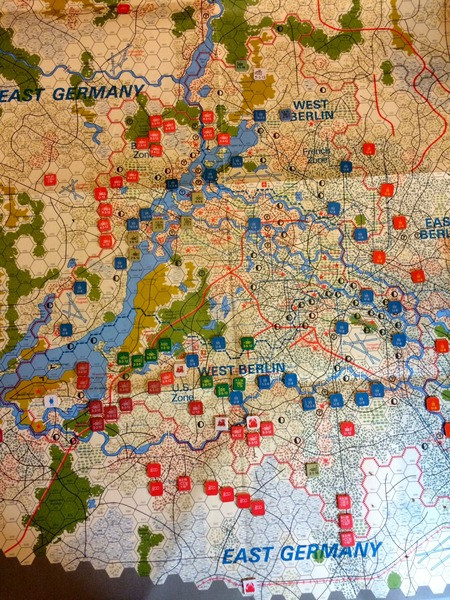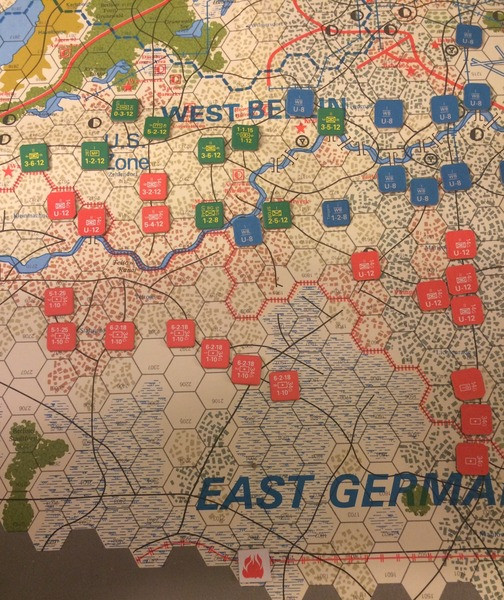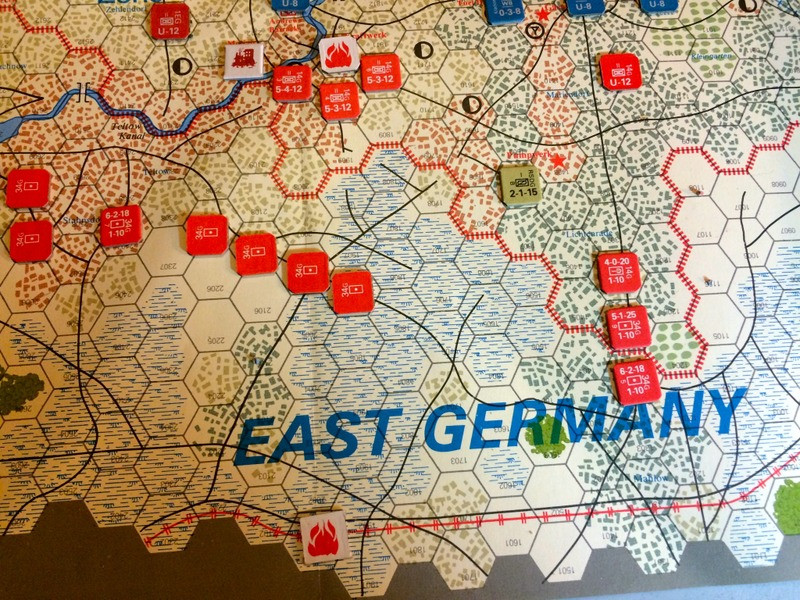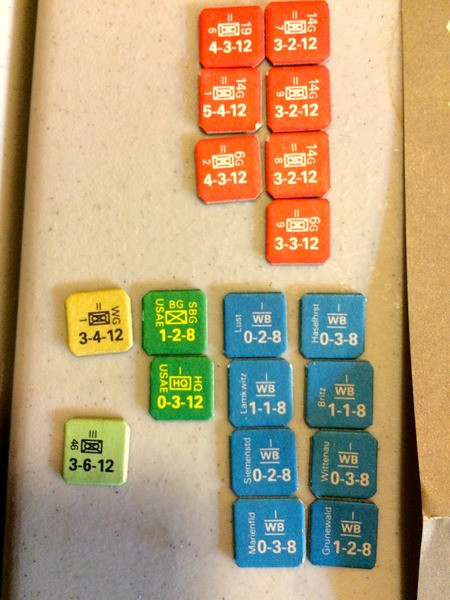
Here’s a thorn in the Soviet side. That little green unit between the T and B in West Berlin is a single US battery, but it’s done nothing for the first three NATO turns except execute fire missions on the vital railroad line (see the flame marker at the bottom of the photo) feeding reinforcements and supplies to the main front. Each fire mission is worth 5VPs to NATO, more than offsetting losses in casualties and objective hexes thus far. It is totally untouchable for now, the Russians don’t have the troops to touch it. Most of the red units towards the bottom of the photo are 34GDs Army artillery, not assault units.

Here’s another cool NATO move. That little brown unit is B Squadron of the Royal Scots Dragoon Guards, the most mobile unit in the NATO garrison. It’s exploiting some gaps in the line to try and get onto one of those rail hexes. If it can do it, that will be 10VPs per turn it stays there and will divert some Pact combat units to find it and kill it.

The butcher's bill so far. Combat in this game is quite bloody.

Much as the Pact commander will hate to do it, he may have to ask for release of the airborne division to make the headway he needs.

Well done Scotts.
ReplyDeleteHappy to see the French holding their ground against the Red Tide.
That ruined building counter rings a bell, I must have played this game.
ReplyDeleteInteresting developments. Some of the VP scoring methods for NATO seem a bit artificial but the more I think about it it is a decent abstraction for the effect on lines of communications/logistics.
ReplyDeleteCheers,
Pete.
So why not withdraw behind the Havel? Would it not make the whole Allied position that much more defensible? I can not see what the units are west of the Havel, but there 8 of them and some them look like they could be cut off and others will take more damage and inflict less based on their location
ReplyDeleteIs there something I am missing from the gameplay mechanics that makes it worth them staying where they are?
Hi Bernard:
DeleteGood question and good to hear from you. The strategy of defending south of the Havel is partly a strategy to buy time and force casualties on the Pact. The WG police units are only useful for defence, but in urban and industrial hexes, and there are some of those on the far side of the Havel, they get significant defensive advantages. Even with the Pact's superior firepower, they have an excellent chance of causing costly exchanges, which since the WP doesn't have that many mechanized assault units, is something they can't really afford. Also, creating a perimeter on the far side of the Havel buys NATO more time to use the US artillery unit to gain victory points bombarding the railroad at the bottom of the map, which represents interdicting the flow of men and material to the main battle against NATO on the German plain. Since the US battery only has a 15 hex range, it needs to be as far south as possible, and thus needs protection. When I finished the game on Friday, it was a Marginal NATO victory, so I guess the strategy worked.